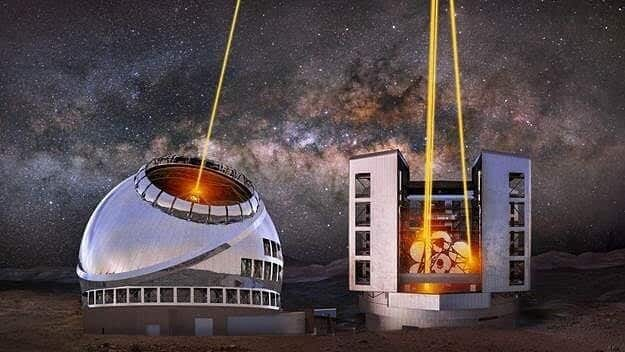
Mapping the universe: Indian scientists develop tool for star catalog
What's the story
A team of researchers at the Indian Institute of Astrophysics (IIA) has developed an online tool to create a catalog of stars. This tool is designed to enhance the capabilities of the forthcoming Thirty Meter Telescope (TMT) in Hawaii, enabling it to generate high-quality astronomical images. The research, conducted at the Bengaluru-based institute, marks a significant contribution from India to the TMT project.
Solution
Overcoming atmospheric distortion: The role of adaptive optics
The TMT, like other ground-based telescopes with high light-collection capabilities, faces the challenge of atmospheric distortion. To combat this issue, the TMT will be equipped with an adaptive optics system (AOS) that continuously senses and adjusts for changes in the atmosphere. "Atmospheric turbulence affects these laser beams; so measuring atmospheric tip-tilt is uncertain," said Dr. Sarang Shah, who led the research at IIA.
Requirement
The need for a comprehensive star catalog
For optimal performance, the AOS needs at least three natural guide stars (NGS) within its field of view, each as bright as 22 magnitudes in the near-infrared J waveband. However, there is currently no comprehensive star catalog that can provide NGS in all regions of the sky. To address this gap, IIA researchers have developed an automated code that can be used to create a catalog of near infrared (NIR) stars.
Verification
Validating the approach: Over 85% prediction accuracy
The IIA team used multi-band optical photometry from the PAN-STARRS telescope in Hawaii to filter and identify the stars and predict their near-infrared magnitudes. Data from the UKIDSS survey of the United Kingdom Infrared Telescope were used to validate this approach. The method achieved over 85% prediction accuracy, demonstrating its effectiveness in identifying suitable natural guide stars for optimal telescope performance.
Partnership
The Thirty Meter Telescope: A global collaboration
The TMT, planned on Mauna Kea in Hawaii, will feature a 30-meter diameter primary mirror made up of 492 precisely aligned individual segments. It is being jointly built by several institutions including the California Institute of Technology, India's Department of Science and Technology, the University of California, and institutions and observatories in Canada, China, and Japan. The IIA leads the Indian collaboration in the TMT project, along with IUCAA in Pune, and Aryabhatta Research Institute for Observational Sciences in Nainital.